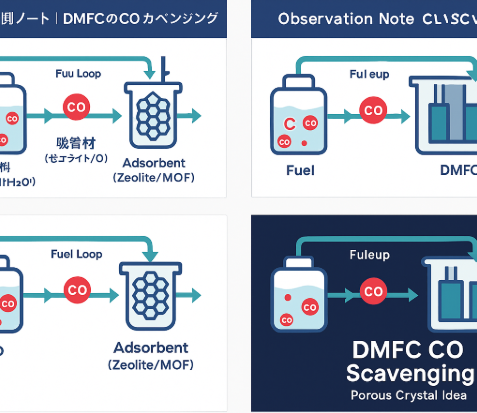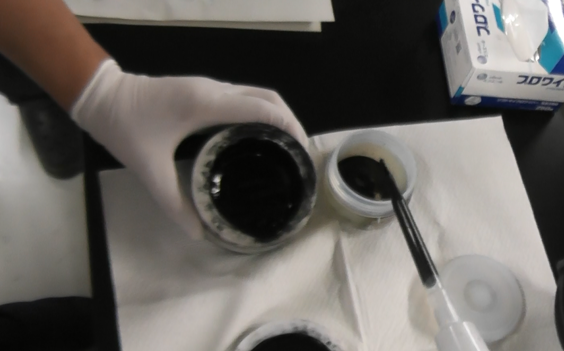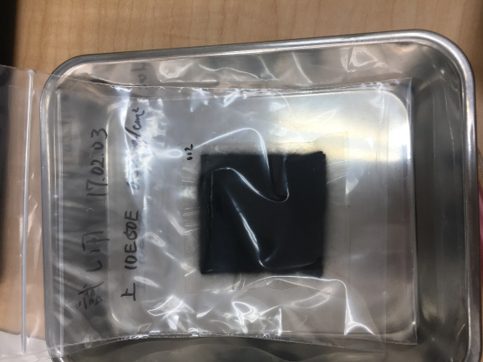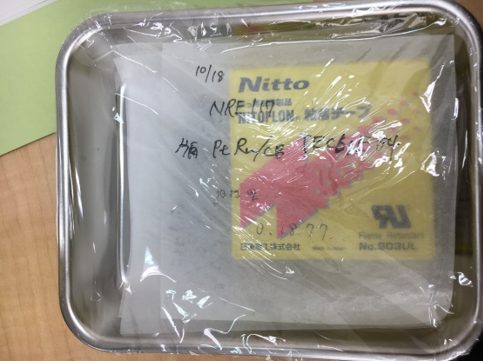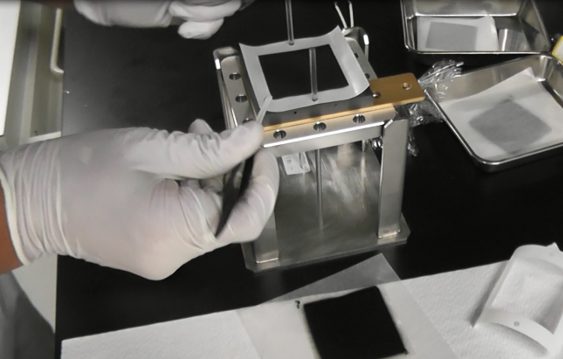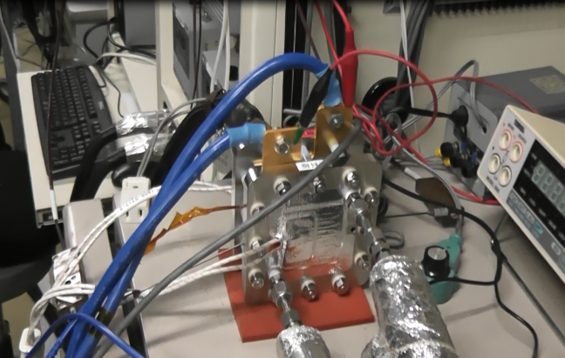概要
これは「着想の共有」です
直接メタノール型燃料電池(DMFC)では、アノードで生じる一酸化炭素(CO)が白金系触媒に強く吸着して性能を下げます。
ここでは、燃料側(メタノール水溶液)にCO選択吸着材を配置して溶存COの活量を下げるという“受動スカベンジ”のアイデアを共有します。
考え始めた時期:2018年ごろ(約7年前)
現在の位置づけ:未実証のアイデアメモ。どこかで試していただけたら、とても嬉しいです。
※本記事は技術情報の共有を目的としたノートです。実験・運用は安全と法令を最優先のうえ各自の責任でご判断ください。
アイデアの核心
アノード近傍では CO*ads ⇄ CO*sol の微視的平衡が成り立ちます。
溶存COを選択的に吸着できれば、平衡はCO低活量側へ傾き、表面被毒が相対的に軽くなるはず、という発想です。
既存の Pt–Ru合金化や運転制御 と**相加的(足し算)**に効くことを期待しています。
実装スケッチ(3方式)
燃料循環ライン直列カラム
再循環ループに**Cu(I)交換ゼオライト(Y/MOR等)**を少量充填した小型カラムを直列接続(低圧損・温和再生設計)。
触媒層内に微量添加
疎水化MOF/微細ゼオライトを触媒インクへ**5–10 wt%**程度ブレンドし、アノード至近の“ミニシンク”として機能させる。
燃料タンク内メッシュカートリッジ
PTFEメッシュの“ティーバッグ”に吸着材を封入して燃料槽へ浸漬。改造が最小。
材料の第一候補はCu(I)交換ゼオライト(水・アルコール中で比較的堅牢、CO選択性の知見が厚い)。MOFは疎水化・被覆などの安定化処理を前提に選択。
もし誰かが試すなら(最小プロトコル)
セル:アノード Pt–Ru/C、カソード Pt/C、膜はNafion系
燃料:1–2 M MeOH(60–80 ℃)、再循環
比較:吸着材なし vs. 上記3方式
測定:分極・ピーク出力、**定電位保持(例:0.5 V×6 h)**の電流維持率、COストリッピング電荷、EIS、燃料中の溶存CO(ヘッドスペースGC)
期待したい兆候(目安)
電流維持率 +5〜15%
COストリッピング電荷 −10〜20%
アノード過電圧 −10〜30 mV
(装置や運転点で変動。“効果なし”も重要な知見です。)
リスクと注意
MOFの溶媒安定性:まずはゼオライト主体が無難。MOFは疎水化・被覆等の前処置を。
圧損・拡散抵抗:カラムは低ΔP設計、触媒層への添加は入れ過ぎ注意。
溶出・粉落ち:ICP-MSで金属溶出を監視。封入・フィルタ設計で対策。
これは「招待状」ではなく「置き手紙」
本ページは、“どこかで芽が出たら嬉しい”という置き手紙です。研究室でも企業ベンチでも、たとえ結果が芳しくなくても——結果が共有されること自体に価値があると考えています。
クレジットと注記
発想メモ:株式会社NTシステムズ(観測例ノート)
再利用:引用・紹介は歓迎です。本ページ名の記載だけで十分です。
タグ:DMFC/CO被毒/ゼオライト/MOF/受動スカベンジ/再循環カラム
(英語版)
Observation Note | A CO-Scavenging Idea for DMFCs
— Using porous crystals (PCP/MOFs or zeolites) to gently remove dissolved CO and soften Pt-site poisoning —
What this page is
In direct methanol fuel cells (DMFCs), carbon monoxide (CO) formed at the anode adsorbs strongly on Pt-based sites and depresses performance.
This note shares a simple concept: place a CO-selective adsorbent in the fuel (methanol–water) side to lower dissolved-CO activity, hoping to tip the local balance and ease poisoning.
First conceived: around 2018
Status: Unproven idea note. If someone tries it somewhere, we’d be delighted.
Please prioritize safety, compliance, and your own responsibility if you experiment with this idea.
Core hunch
Near the anode there is a microscopic balance between CO*ads and CO*sol.
Selectively removing dissolved CO could shift the balance toward lower CO activity, easing surface poisoning and improving current retention and recovery.
Intended to be additive, not competitive, with measures like Pt–Ru alloying or operating-point control.
Three ways it might be implemented
Inline mini-column in the recirculation loop
A small packed bed of Cu(I)-exchanged zeolite (Y/MOR) in series; low pressure drop, mild thermal regeneration.
A small fraction in the anode catalyst layer
Blend hydrophobized MOF or fine zeolite (~5–10 wt%) into the ink to act as a local “mini-sink”.
A mesh cartridge in the fuel tank
PTFE mesh “tea-bag” immersed in the reservoir; minimal hardware change.
First choice material: Cu(I)-exchanged zeolites (robust in alcohol/water, well-documented CO selectivity). MOFs are options only with stability treatments (hydrophobization/coating).
Minimal protocol sketch (if someone tries)
Cell: Pt–Ru/C anode, Pt/C cathode, Nafion membrane
Fuel: 1–2 M MeOH, 60–80 °C, recirculating
Comparisons: no adsorbent vs. the three approaches above
Measurements: polarization & peak power; chronoamperometry (e.g., 0.5 V, 6 h) for current retention; CO-stripping charge; EIS; dissolved CO (headspace GC)
Quiet hopes (ballpark signals)
Current retention +5–15%
CO-stripping charge −10–20%
Anode overpotential −10–30 mV
(Results will vary; “no effect” is still useful knowledge.)
Risks & caveats
MOF stability: start with zeolites; treat MOFs for alcohol/water robustness.
Pressure drop & diffusion: keep columns low-ΔP; avoid over-filling the catalyst layer.
Leaching/particulates: monitor metals (ICP-MS); design cartridges/filters to prevent fines escape.
A note in a bottle
This is not a call for proposals—just a note left on the shoreline. If a lab, a company bench, or a garage experiment makes something of it—success or failure—we’ll be cheering.
Credits & attribution
Idea note: NT Systems, “Observation Note” series
Reuse: Feel free to cite or share with a simple attribution to this page.
Tags: DMFC, CO poisoning, zeolite, MOF, passive scavenging, recirculation column

